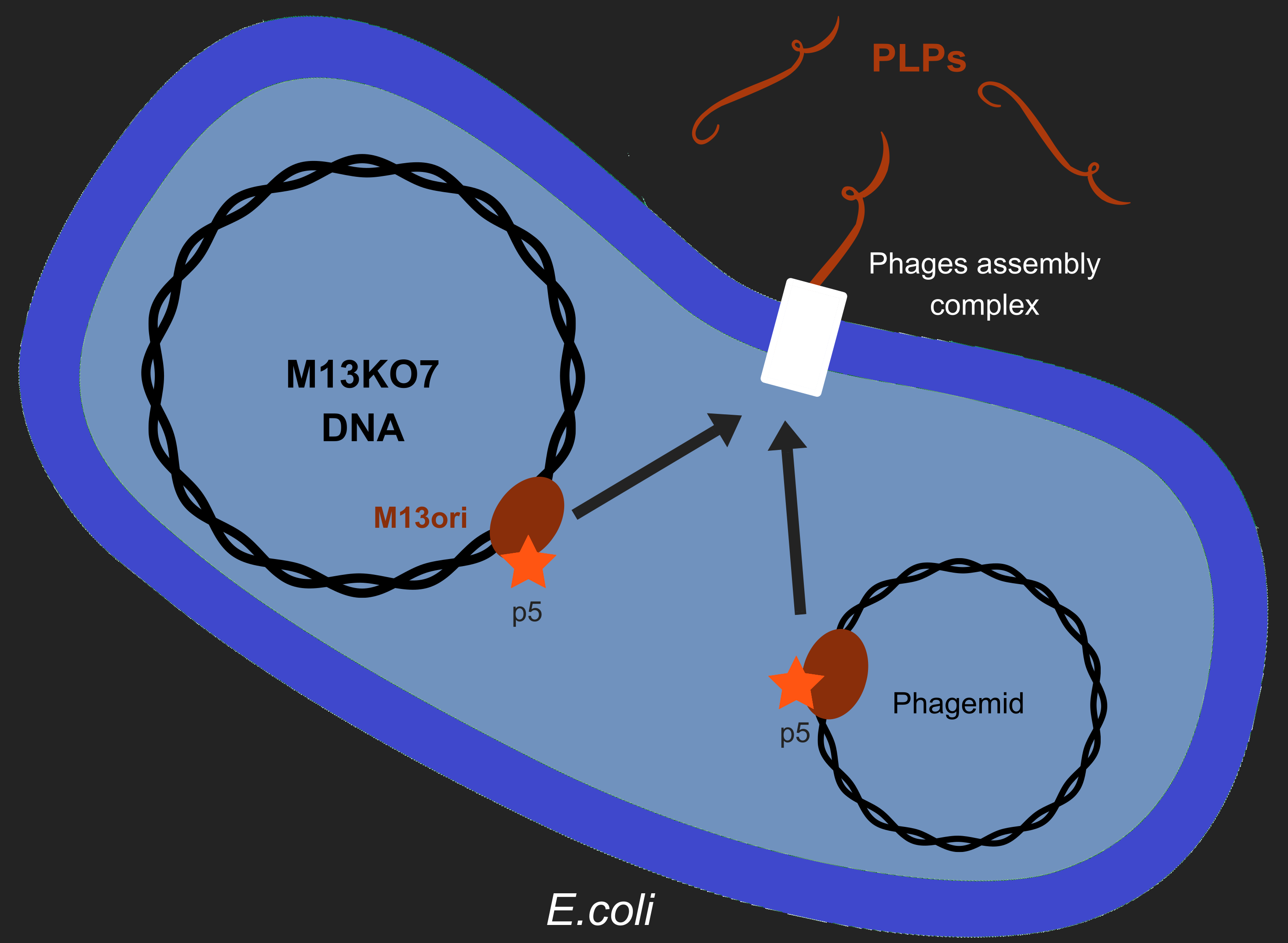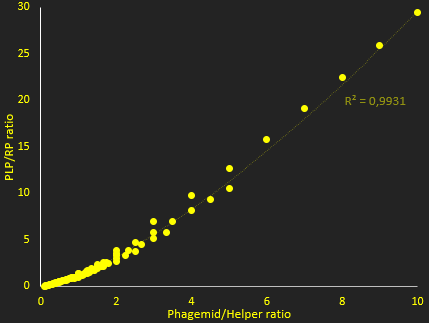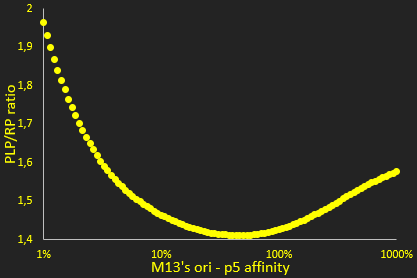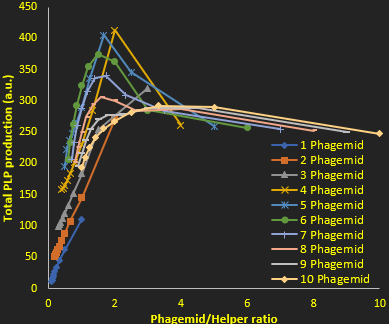Erwan Eriau (Talk | contribs) (deleted table) |
Erwan Eriau (Talk | contribs) m (→The Model) |
||
| Line 29: | Line 29: | ||
The new equations are the following:<!-- NOOOOOOO this does not help explain anything --> | The new equations are the following:<!-- NOOOOOOO this does not help explain anything --> | ||
<TABLE BORDER="1"> | <TABLE BORDER="1"> | ||
| − | <CAPTION> Table 1: | + | <CAPTION> Table 1: </CAPTION> |
<TR> | <TR> | ||
<TH> Title </TH> | <TH> Title </TH> | ||
| − | <p>We observed we could roughly reproduce the published copy number of plasmids by tweaking our parameter describing the affinity of DNA polymerase for the plasmid's origin of replication ("Polymerase Bindint Event") in our model when the reactions describing phage formation where inactivated. This is a purely empirical observation. To the best of our knowledge, their is no published data describing this parameter, which is why we assumed published data for plasmid copy number can be used as a proxy to approximate the proclivity of DNA polymerase to bind the plasmid's origin of replication.< | + | <p>We observed we could roughly reproduce the published copy number of plasmids by tweaking our parameter describing the affinity of DNA polymerase for the plasmid's origin of replication ("Polymerase Bindint Event") in our model when the reactions describing phage formation where inactivated. This is a purely empirical observation. To the best of our knowledge, their is no published data describing this parameter, which is why we assumed published data for plasmid copy number can be used as a proxy to approximate the proclivity of DNA polymerase to bind the plasmid's origin of replication.</p> |
The modified model is available [[File:T--Aix-Marseille--Model.zip | here.]] | The modified model is available [[File:T--Aix-Marseille--Model.zip | here.]] | ||
We used the initial [[Team:Aix-Marseille/M13_test|measurement]] to constrain parameters of the model. | We used the initial [[Team:Aix-Marseille/M13_test|measurement]] to constrain parameters of the model. | ||
| − | |||
| − | |||
| − | |||
==Results== | ==Results== | ||
Revision as of 21:08, 1 November 2017
Modelling PLP production

The problem
Our objective is to produce phage like particles (PLP), for this, the bacteria must contain both a helper phage and also a phagemid (Figure 1). During phage production, several key events determine which DNA molecules are packaged into phage or PLP. These involve recognition of the M13 replication origin by several phage proteins.
A major hurdle to marketing KILL XYL is obtaining the necessary authorizations. Our interviews and legislation study both showed that the number of viable phages could be a problem. We therefore decided to measure and model the ratio between viable phage and phage-like particles, and so try to optimize this ratio to facilitate the preparation of pure PLP.
The Model
We based our model on a recently published model of "wild-type" M13 replication [1] [2].
This model was modified to accomodate the fact our system has two plasmids (Helper and Phagemid) while the previously modeled system has only one. This means we incorporated: the presence of a phagemid, with its own replicative origin and M13 origin, the helper-phage E. coli plasmid origin and the modification of the helper-phage M13 origin. This was done by adapting the existing model and adding new parts to the existing model. These modifications added 9 species and 3 parameters and 13 equations to the original model, and changed 8 parts of the previous model.
The new equations are the following:
| Title |
|---|
- ↑ Smeal et al, Simulation of the M13 life cycle I: Assembly of a genetically-structured deterministic chemical kinetic simulation, Virology, 500, January 2017
- ↑ Smeal et al, Simulation of the M13 life cycle II: Investigation of the control mechanisms of M13 infection and establishment of the carrier state, Virology, 500, January 2017




